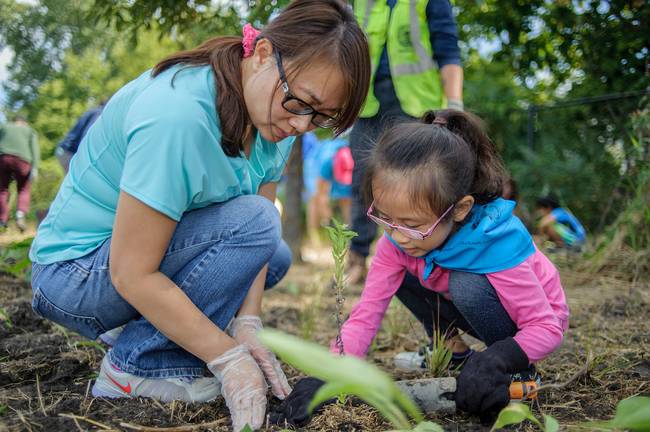Source: treehugger.com
Published: May 3, 2017

© Laura Stoecker for The Nature Conservancy
Learn about the advances and setbacks around protecting our oceans, waterways, forests, and wildlife.
From golden sand dunes rising along the Lake Michigan shoreline to vibrant prairies bustling with the songs of migratory birds, my job as a community stewardship manager in Chicago always reminds me that the seeds you sow can have unexpected — and sometimes incredible — results.
Take, for example, Chicago’s Chinatown neighborhood, which lacked access to green spaces for 30 years after the construction of the Dan Ryan Expressway demolished its only two parks. But the community’s need for a connection to nature wasn’t destroyed — it survived, just like a seed waiting for spring to arrive. And finally in 1998, after a campaign led by Chinatown’s most noted civic leader, Ping Tom, the Chicago Park District began transforming an old Chicago and Western Indiana Railroad yard into what is today Ping Tom Memorial Park. Now, the community once again has access to outdoor space through a children’s playground, community gathering areas, and Chinese landscape design elements.

© Laura Stoecker for The Nature Conservancy
But the story doesn’t end there — the park is also home to an incredible natural area, and that’s where I enter the picture. As part of a partnership between The Nature Conservancy and the Chicago Park District, I serve as the community stewardship program manager for the Chicago Park District’s Natural Areas program. I work with our land managers and community members to help rebuild connections to nature, and inspire a sense of investment and ownership over urban natural areas, like Ping Tom Memorial Park, through volunteerism.
But in the case of Ping Tom Park, the seed (and need) to connect with nature was already planted by some of its youngest community members. I was conducting an outreach program at the park last summer with another Chicago Park District staff member when we were approached by a counselor from the park’s summer day camp. She knew of the natural area, and understood the importance of this place in the park, but needed help finding a way to get the campers excited about a part of the park that didn’t offer baseball, soccer, or swimming. She asked if we could collaborate on a program that would allow the children and their families to learn more and become actively involved in the stewardship of this habitat. Of course, we said yes.

© Laura Stoecker for The Nature Conservancy
We distributed bee balm, prairie dropseed, and other native plant seeds to campers to grow in the field house, and to care for each day during camp. As summer turned into fall, we asked them to either plant their seedlings at home, or to bring them to a community planting day we were coordinating where they could plant them directly in the natural area. Over time, the scope of the event grew to include kayaking, traditional dragon dances, and educational opportunities. We hoped that the campers, their families, and their seedlings would return.
When the day of the event arrived, we were overwhelmed to see how well their plants had done, and how many people turned out for the event. A total of 80 community members joined us to plant 12,000 native grasses and wildflowers in the natural area. During the planting, we saw lots of wildlife, including garter snakes and blue herons. I loved seeing how excited everyone became when they realized their efforts will allow species like these to thrive in the heart of a busy metropolitan area.

© Laura Stoecker for The Nature Conservancy
For many years, Chinatown was a place that lacked access to parks and natural areas. But despite that fact, the community maintained an appreciation, respect, and desire to connect with nature. It was something they wanted access to, and through our collaboration they made this event happen, and they also turned it into something bigger than I could have possibly imagined. For me, this is the best way stewardship happens—when it comes from the ground up.

© Laura Stoecker for The Nature Conservancy
Now, thanks to regular involvement from the community, support from the Chicago Park District, The Nature Conservancy, as well as a partnership with the Ping Tom Park Advisory Council and Shedd Aquarium’s Great Lakes Action Days (GLAD) program, we have regular work days at the site each month. For our recent Earth Day event, which featured tree mulching, clean up, and kayaking, more than 100 volunteers signed up.
And it all started at summer camp with a few small pots and a handful of seeds.

© Laura Stoecker for The Nature Conservancy
This article no longer exists at the Source link above. It can be found in the Matteroftrust.org Resource Library.
